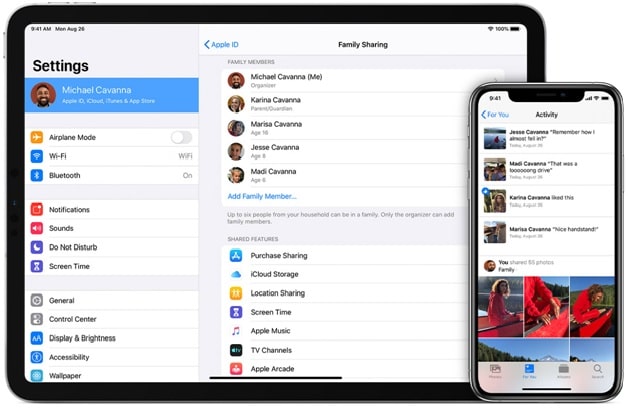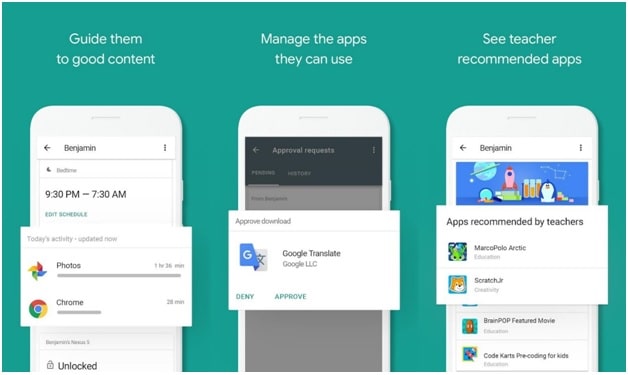How can parents monitor their child’s screen time with the help of apps
We are living in an age where the internet is an integral part of our day to day life. Without the internet, life comes to a halt. The prevalence of mobile phones enables access to the internet. Digital devices have penetrated almost every age group. Children born in the 21st century have grown up alongside digital devices. Hence, it is hard for them to avoid the use of these devices. Because of access to the internet, children expose themselves to all sorts of influences. While the internet can be a source of learning and opportunity, it is too often a place for online crimes. Cases of cyberbullying, extortions, scams, frauds, pornography, and pedophilia are quite common. Children can surely become victims of such crimes if there is a lack of parental monitoring and guidance.
Hence, parents need to be vigilant and control their child’s screen time. There are various tools available but what works best are third-party apps, allowing parents to monitor and remotely control the activity on their kids’ devices.
Here are some tools that parents must use to maintain their child’s online safety and security:
Apple Screen Time controls
iPhones and iPads have in-built Screen Time controls. With these control features, parents can enforce controls on content that they consider inappropriate. Depending on the age restrictions in different regions, parents can have Content & Privacy Restrictions and censor the content that their child views. In addition to this, you can get reports on the screen time activity and what apps your child uses the most. You can also set up Downtime, during which your child will not be able to use their phone. Parents can also set up app limits, the maximum duration for which a child can use a particular app. You need to first change the settings to “This Is My Child’s Device.” To do this, go to Settings >> Screen Time >> Turn On Screen Time >> Continue >> Select This is My Child’s [device].
There are two ways to enforce Screen Time controls on your child’s iOS device. One way is to set up the features directly on your child’s device. Another way is to use the Family Sharing feature on iOS devices. Using this feature, you can add up six family members to a group. It allows you to share books, videos, movies, and other content. Moreover, you can also enforce parental controls on our child’s device using this feature.

Although Apple Screen Time features are sufficient to control a child’s device, these do not allow a parent to monitor the activity on the device. Hence, there are other tools that parents can use instead.
Google Family Link app
The Family Link app is available on the Google Play Store and the App Store for iOS devices. The app provides a range of features when it comes to managing a child’s screen time. In addition to monitoring the activity on a child’s device, parents can manage the apps that their child uses. Parents can also prevent their children from making in-app purchases. Moreover, parents can block apps and prevent children from downloading certain apps.
You can also set restrictions for the total screen time in a day. If the screen time exceeds the limit that you specify, the device locks itself. Parents can also lock the device remotely. Another feature that the Family Link app offers, which lacks in Apple parental control features, is the location tracking feature. As long as the child carries the device with them, parents can track their child’s whereabouts.

You can download the Family Link app on the device that you want to monitor. To monitor your child’s device, you will need to add your child’s Google Account to the app. If your child does not have a Google Account, you can create one. To control your child’s device remotely using the Family Link app, select the account that you want to manage. You can control the device by blocking apps, filtering inappropriate content, and performing other functions.
Third-party parental control apps
Third-party parental control apps are widely available in the market. These range from keyloggers to location tracking apps. Although there are hundreds of parental monitoring apps, not all can be trusted. Any parental control app that claims to be free is most likely a scam that phishes personal information.
You can subscribe to most third-party parental control apps on a monthly, quarterly, and yearly basis as it’s the case with Xnspy – a trusted and widely-used, third-party parental control app. The app is compatible with both Android and iOS devices. Moreover, the app offers a range of features to help parents monitor the activity on an Android or iOS phone.

Parental monitoring apps, such as Xnspy, are installed on the device that you want to monitor. The app works in the background and records a phone’s activity, which is later uploaded to a secure server. Parents can access this data through a web-based user account. To monitor a device, you need a desktop or a laptop.
Here are the main features that Xnspy offers:
- Location tracking
- Call logs (including incoming, outgoing, and missed calls)
- Contact list
- Monitoring text messages
- Monitoring instant messaging apps (Facebook Messenger, Instagram Direct Messages, WhatsApp Messages, Skype, LINE, Kik, and others)
- Email monitoring
- Browser history
- Bookmarked webpages
- Multimedia files (pictures and videos saved on the device)
- Application blocking
- Locking device remotely
- Taking screenshots remotely
The installation procedure for Xnspy is straightforward. You need to install the app if your child has an Android device. After you subscribe to the app, you will receive an email with the login details, including a download link. Open the link on the Android device; it will download the app on the phone. Install the app and enter the activation key on your email.
To install the app on an iPhone, you only require the iCloud credentials, which include the Apple ID and password. Then log in to your Xnspy account. Select iOS (no-jailbreak). Provide the iCloud credentials, and select the device that you want to monitor. With this, the installation process is complete. If the two-factor authentication code (2fa code) is enabled on the device, you will need to disable it. For this, you require physical access to the device. You can now monitor your child’s activity on a smartphone remotely.
Parental monitoring apps provide convenience to parents because you can access your child’s activity without checking their devices. Moreover, these apps work in the background so parents can receive live updates about their child’s movements. You can also control your child’s screen time by blocking apps. There is no doubt that these apps have become a necessity for today’s parents.
Conclusion
Parents never know who their child may be interacting with on the internet. The internet makes it difficult for one to identify an individual. Hence, cybercriminals use it as a means to trap children, who are unable to determine a person’s motives. It is why parents must use parental monitoring tools to track their child’s activities so that they can intervene when their child is in danger.








